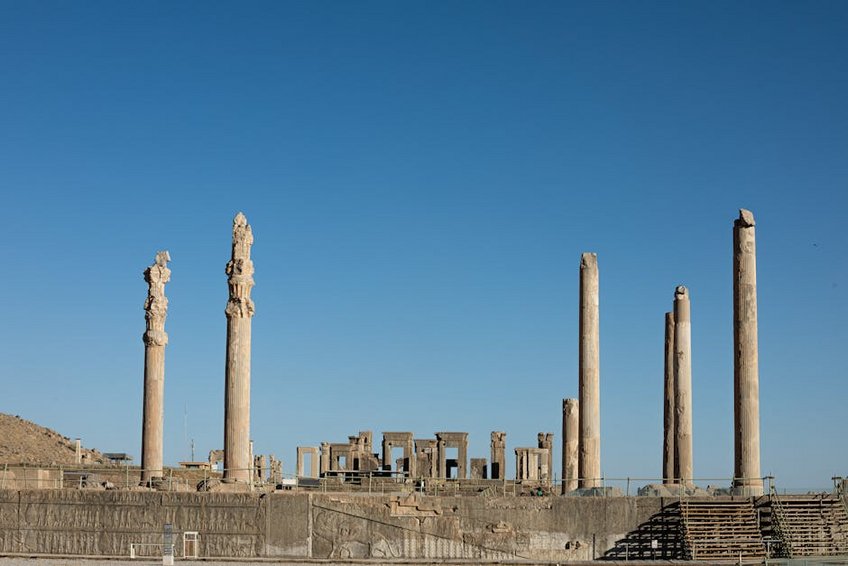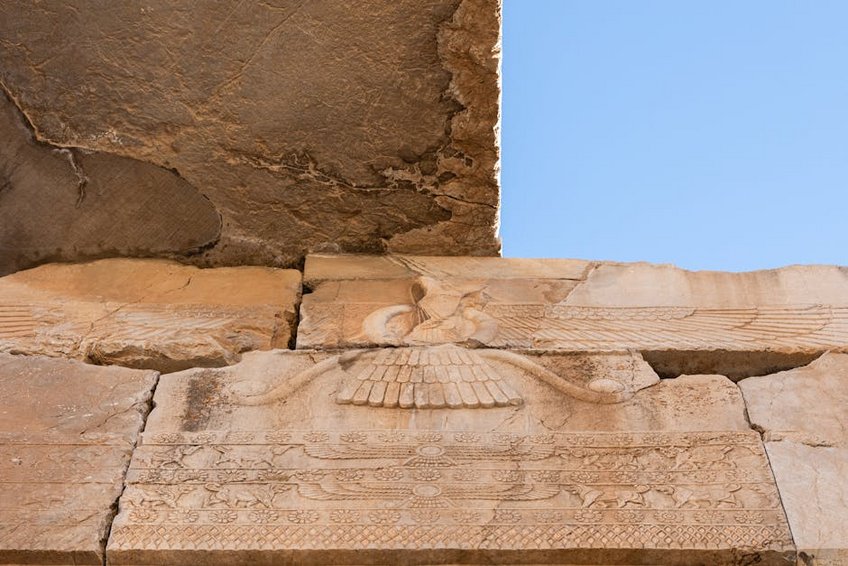Shiraz Persepolis Ancient City: A Journey Through Persia’s Glorious Past
Stepping into the Shiraz Persepolis ancient city complex feels like traveling through a time portal to the heart of the Persian Empire. This UNESCO World Heritage Site, located just 60 kilometers northeast of modern-day Shiraz in Iran, stands as one of the most magnificent archaeological treasures in the entire Middle East. Founded by Darius I in 518 BCE and expanded by subsequent Achaemenid kings, Persepolis served as the ceremonial capital of the Achaemenid Empire for nearly two centuries. The sheer scale of the ruins, the intricate carvings adorning the stone platforms, and the ghostly presence of what was once the center of a vast empire create an unforgettable experience for any traveler with an interest in ancient history. You’ll walk along the same processional ways that ambassadors from across the known world once trod, bringing tribute to the Persian kings during the lavish Nowruz (New Year) celebrations. The Shiraz Persepolis ancient city experience offers more than just historical education—it provides a tangible connection to a civilization that shaped much of the ancient world.
Shiraz Persepolis Ancient City – Essential Historical Background
Understanding the historical context of the Shiraz Persepolis ancient city dramatically enhances your visit to this remarkable site. The Achaemenid Empire, founded by Cyrus the Great, stretched from the Indus Valley to the Balkans at its height, making it the largest empire the world had yet seen. Persepolis (known as Takht-e Jamshid in Persian) was never the administrative capital—that honor belonged to Susa and Ecbatana—but rather served as a ceremonial center where the king received dignitaries and celebrated religious festivals. The construction began around 518 BCE under Darius I and continued under his successors Xerxes I and Artaxerxes I. The city’s location was strategically chosen in the heart of the Persian homeland, with a fortified terrace built against the mountain of Kuh-e Rahmat (Mountain of Mercy). The complex was largely destroyed by Alexander the Great in 330 BCE, though whether this was accidental or deliberate remains debated by historians.
Architectural Significance – What Makes Persepolis Unique
- The Apadana Palace features magnificent columns standing 20 meters tall, with elaborate double-bull capitals that demonstrate advanced engineering techniques for the period
- Detailed bas-reliefs along the staircases depict representatives from 23 subject nations bringing gifts to the king, providing invaluable insight into ancient costumes and cultures
- The Gate of All Nations, guarded by massive lamassu (human-headed winged bulls), served as the formal entrance where visitors were received before proceeding to audience halls
- Budget travelers can expect to spend approximately $25-40 per day including entry fees, transportation from Shiraz, and basic meals, with hostel accommodation in Shiraz costing $15-25 per night
- Mid-range visitors should budget $60-100 per day covering comfortable hotels ($40-70), guided tours ($20-30), restaurant meals, and private taxi transportation to the site
- Luxury experiences including premium hotels, private guides specializing in ancient history, and extended tours with additional sites like Naqsh-e Rustam might cost $150-300 per day
- UNESCO World Heritage Centre – Persepolis
- Lonely Planet – Persepolis Travel Information
Cultural Importance – Beyond the Stones
Persepolis represents more than just ancient ruins; it embodies the pinnacle of Persian architectural achievement and imperial ideology. The site’s construction involved materials and artisans from across the empire, making it a physical manifestation of the Achaemenid policy of tolerance and incorporation of diverse cultures. The inscriptions found at Persepolis, particularly those of Darius I, provide crucial evidence for understanding Old Persian language and the administration of the vast empire. For modern Iranians, Persepolis remains a powerful symbol of national identity and cultural continuity, with the site featuring prominently in contemporary Iranian art, literature, and even banknotes. Your visit connects you to this living cultural heritage that continues to resonate more than two millennia after the city’s destruction.

Shiraz Persepolis Ancient City – Planning Your Visit
Proper planning ensures you make the most of your visit to the Shiraz Persepolis ancient city complex. The site covers approximately 125,000 square meters, so you’ll want to allocate sufficient time to explore without rushing. Most visitors spend between 3-5 hours exploring the main terrace and surrounding areas, though history enthusiasts might want to budget a full day. The best approach is to start early in the morning to avoid both the crowds and the intense afternoon heat, especially during summer months. Wear comfortable walking shoes with good grip as you’ll be navigating uneven stone surfaces and staircases. Bring sun protection—hat, sunscreen, and sunglasses—as shade is limited throughout the complex. Consider hiring a licensed guide at the entrance; their knowledge greatly enhances the experience by pointing out details you might otherwise miss and providing historical context that brings the stones to life.
Best Time to Visit Shiraz Persepolis Ancient City
The ideal time to visit the Shiraz Persepolis ancient city is during the spring (March to May) or autumn (September to November) when temperatures are mild and pleasant for exploring outdoor archaeological sites. Spring offers the additional advantage of surrounding landscapes blooming with wildflowers, creating a beautiful contrast with the ancient stones. Summer months (June to August) can be extremely hot, with temperatures regularly exceeding 100°F (38°C), making midday exploration uncomfortable and potentially dangerous without proper hydration and sun protection. Winter days (December to February) are cooler but still manageable, though you’ll want to dress in layers as temperatures can drop significantly, especially in the early morning and late afternoon. Rainfall is generally low throughout the year, but occasional showers occur mainly between November and April.
Budget Planning and Costs for Your Persepolis Visit
Essential Preparation Checklist
Before visiting the Shiraz Persepolis ancient city, ensure you’ve addressed several practical considerations. Check visa requirements for Iran based on your nationality—many Western passport holders need to obtain visas in advance, though some nationalities can get visa-on-arrival. Ensure your travel insurance covers Iran, as many standard policies exclude the country. Download offline maps and translation apps since internet access may be limited. Carry sufficient cash (US dollars or euros) as international credit cards don’t work in Iran due to sanctions. Learn a few basic Farsi phrases—simple greetings like “salam” (hello) and “merci” (thank you) are appreciated. Dress modestly in accordance with local customs, particularly important for female travelers who need to wear headscarves in public areas.
Shiraz Persepolis Ancient City – Top Attractions and Viewing Points
The Shiraz Persepolis ancient city complex contains numerous remarkable structures spread across the massive stone terrace. Begin your exploration at the Grand Stairway, the original entrance where visitors would ascend to the platform. The Gate of All Nations, built by Xerxes I, features enormous carved bull-like figures that guarded the entrance to the royal complex. The Apadana Palace represents one of the most impressive structures, where the king would receive dignitaries—notice the exquisite reliefs on the eastern staircase depicting representatives of various nations bringing tribute. The Throne Hall (Hall of a Hundred Columns), though largely destroyed, still conveys the immense scale of Achaemenid architecture. Don’t miss the Treasury, where artifacts including the famous Foundation Charter of Darius were discovered. The royal tombs behind Persepolis offer stunning views back across the terrace, especially during golden hour.
Must-See Highlights Within the Complex
Among the countless details at the Shiraz Persepolis ancient city, several highlights deserve special attention. The Apadana Palace reliefs showcase incredible craftsmanship, with detailed depictions of Medes, Persians, and other nationalities in their distinctive costumes. Look for the famous lion-bull combat motif that appears throughout the complex, symbolizing the vernal equinox and Nowruz celebrations. The Tripylon (Central Palace) contains fascinating reliefs showing dignitaries and servants, providing glimpses into court life. The unfinished gate of the complex offers insight into construction techniques, with mason’s marks still visible on some stones. The Museum of Persepolis, located near the entrance, houses important artifacts discovered during excavations, including clay tablets with cuneiform inscriptions that helped decipher Elamite language.
Hidden Gems and Lesser-Known Details
Beyond the main structures, the Shiraz Persepolis ancient city contains numerous subtle details that many visitors overlook. Examine the foundation inscriptions of Darius I, carved in three languages (Old Persian, Elamite, and Babylonian), which helped archaeologists decipher cuneiform script. Look for the graffiti left by early travelers, including some from the 19th century, reminding us that people have been fascinated by these ruins for centuries. The water management system, with its sophisticated underground channels, demonstrates the advanced engineering of the Achaemenids. The quarries where the stones were extracted lie northeast of the terrace—seeing the scale of these operations enhances appreciation for the construction achievement. During quieter moments, find a spot to simply sit and imagine the spectacle that would have unfolded during Nowruz celebrations, with thousands of participants from across the empire gathered on these grounds.
Shiraz Persepolis Ancient City – Practical Travel Information
Reaching and navigating the Shiraz Persepolis ancient city requires some practical knowledge to ensure a smooth experience. The site is located approximately 60 kilometers (37 miles) northeast of Shiraz, with the journey taking about 60-90 minutes depending on traffic. Most visitors base themselves in Shiraz, which offers a wide range of accommodation options and serves as the logical gateway to Persepolis and other nearby historical sites like Pasargadae and Naqsh-e Rustam. While public transportation exists, the most convenient option is hiring a private taxi for the day, which allows flexibility to visit multiple sites at your own pace. Alternatively, organized tours depart regularly from Shiraz and typically include knowledgeable guides, though you’ll have less control over your schedule. The site itself is well-maintained with clearly marked paths, though some areas may be restricted for preservation purposes.
| Category | Options/Features | Price Range (USD) |
|---|---|---|
| Entrance Fees | Foreign tourist rate includes Persepolis and nearby sites | $10-15 per person |
| Transport from Shiraz | Private taxi, shared taxi, or tour bus | $20-50 round trip |
| Guided Tours | English-speaking licensed guides available at entrance | $20-30 for 2-3 hours |
| Nearby Accommodation | Limited options near site, better selection in Shiraz | $15-150 per night |


